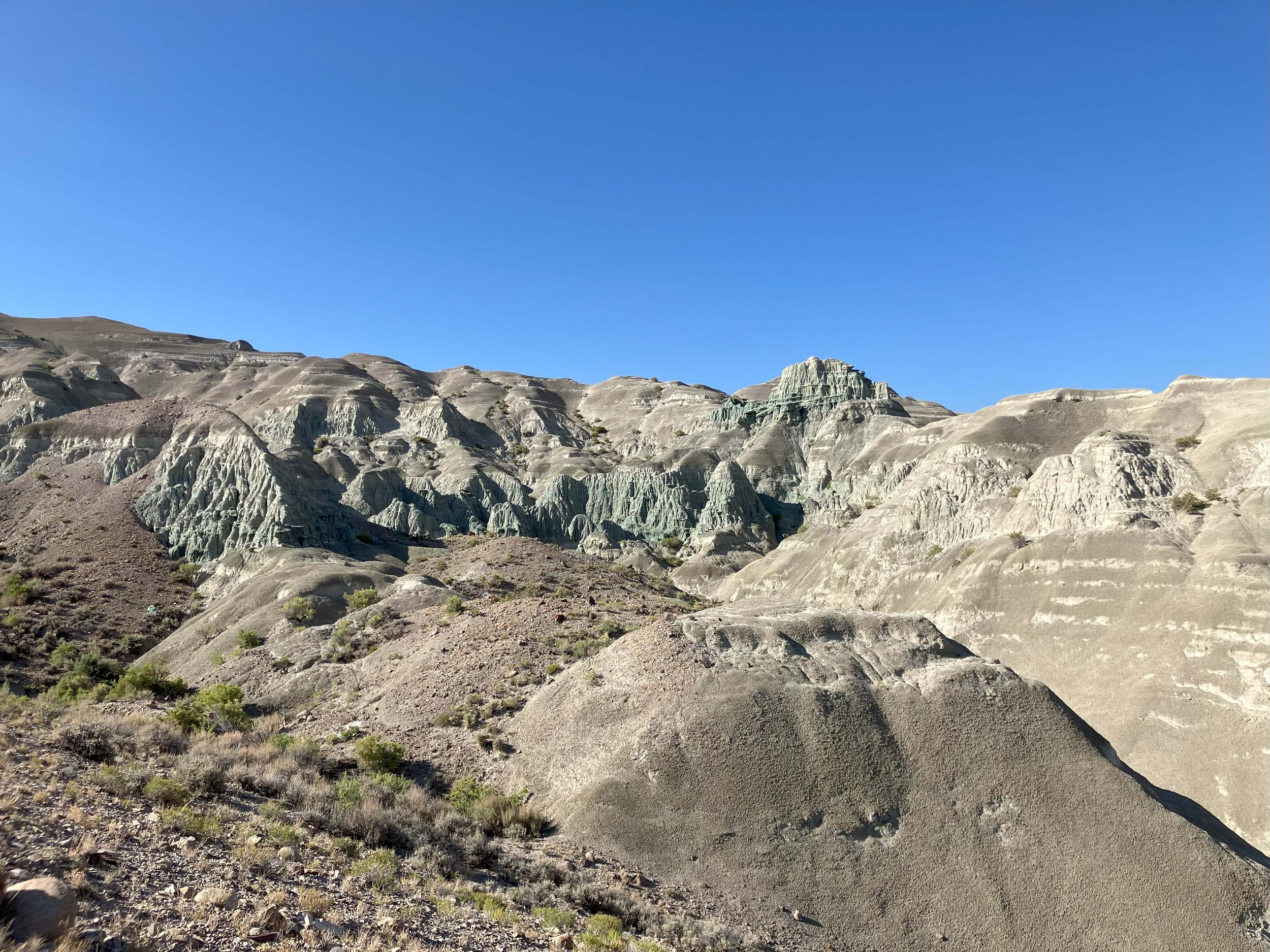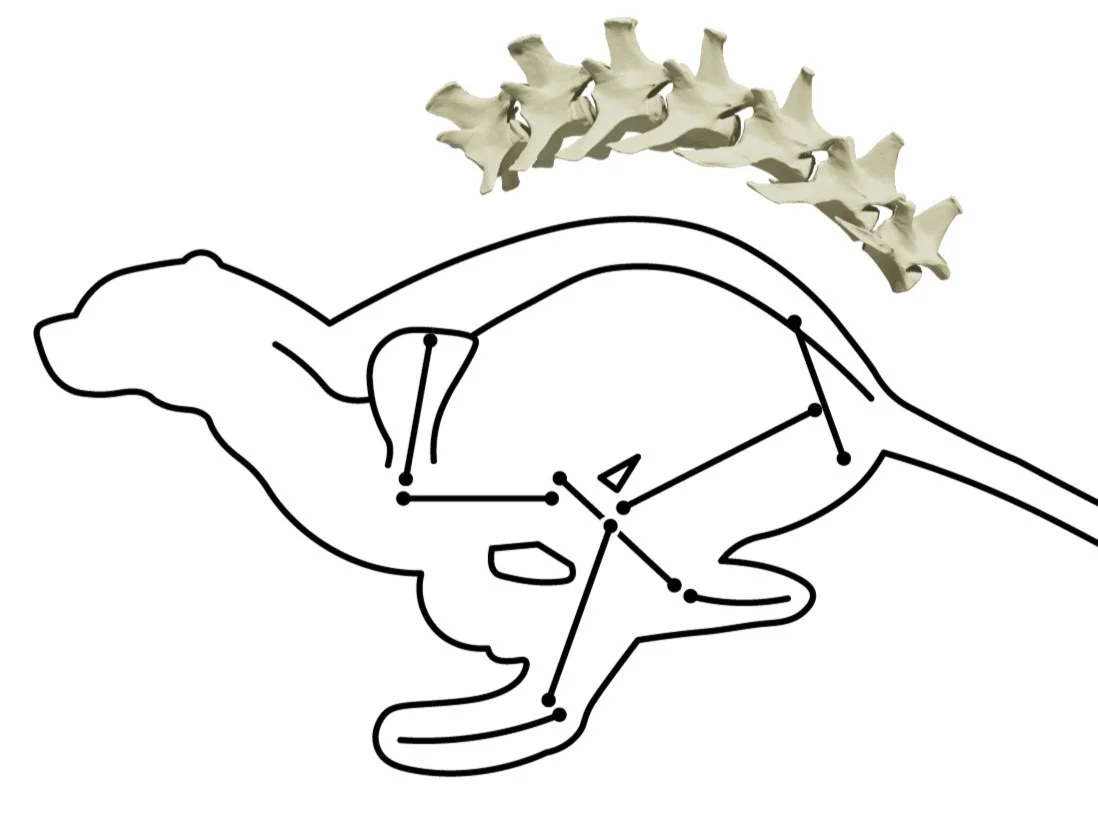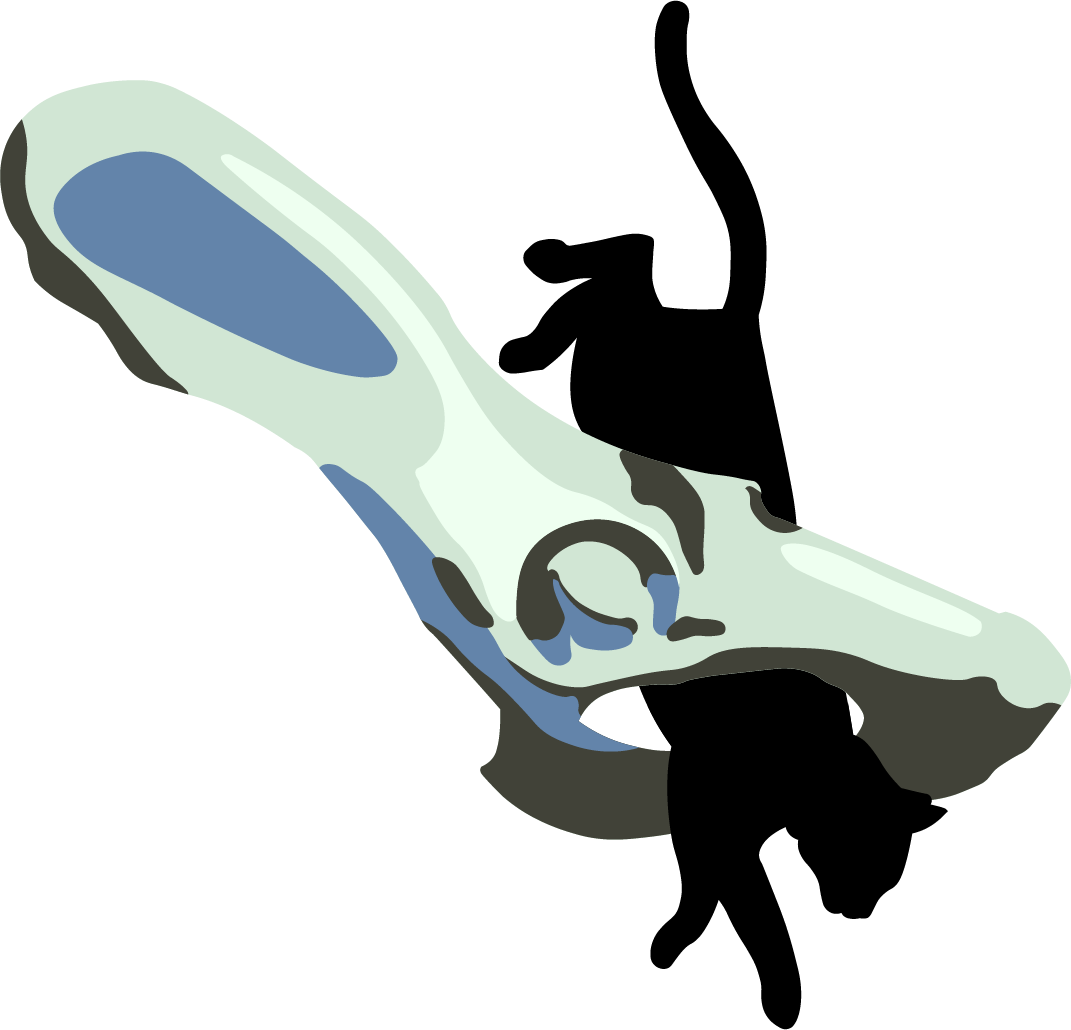
Bridging the Past and Present of Mammalian Locomotion
Locomotion is a fundamental component of mammalian ecology, affecting how mammals search for and acquire food, escape from danger, migrate, disperse, and navigate their habitats. My research centers around how the complex relationship between locomotion and the shape of the skeleton has evolved in response to environmental change. I use 3D scanning methods on both fossil and modern mammals to quantify and compare shape across species.
Talk on my current research, given for the February 2025 meeting of the Michigan Society of Fellows. This interdisciplinary group crosses the humanities, social sciences, and sciences.
Core Research Areas
-

Measuring Locomotion
How is locomotion measured and compared across multiple species? This is a necessary step to understand the evolutionary relationship between the skeleton and how a mammal moves, but data on locomotion is often limited and difficult to compare. I am developing methods that use GPS tracking data, from the online repository Movebank, to compare locomotor performance across species
-

Paleobiology of Carnivorous Mammals
The first mammals to evolve after the extinction of the dinosaurs encompassed an unusual combination of recognizable ancestors to groups like primates and horses and bizarre creatures like the carnivorous creodonts (Patriofelis pictured above). I study how these animals, particularly early carnivores and creodonts, may have moved by comparing their skeletal anatomy with that of modern mammals.
-

Lumbar Vertebrae
My PhD dissertation work centered around the origin of lumbar vertebrae as a distinct functional unit and critical component of mammalian locomotion. Vertebral morphology represents an intriguing trade-off between phylogenetic history and functional adaptation. Published papers from this work are on the ancestral morphology of lumbar vertebrae, variation in early placental mammals, and the function of unusually shaped articulations.
Primary Research Methods
-

3D Digitization
I use everything from microCT scanning to photogrammetry to make 3D models of fossils and bones. I have worked extensively with open-source software like 3D Slicer, Blender, and Meshlab and developed workflows as a research assistant along every step of the 3D digitization pipeline. All models used in my research are available by request on Morphosource. I use these models for quantitative analysis of morphology (geometric morphometrics).
-

Geospatial Data
Prior to entering graduate school, I worked for a utility company, digitizing old work records into a GIS database. I continue to apply these skills in my research across a variety of projects. As an intern at John Day Fossil Beds National Monument in Oregon. I digitized >1000 fossil locality records and used this data to create a help create a new fossil inventory management plan.
-

Paleontological Field Work
My primary field area is the Bridger Formation, 50 million year old basin deposits found in southwestern Wyoming. Many of the fossils in collections I work on come from this area. I engage in paleontological field work and fossil collection to better understand the context in which these fossils are found and contribute new finds that improve our knowledge of the paleoecology of this time and place.
